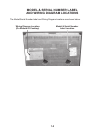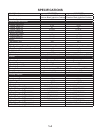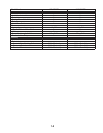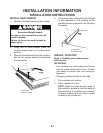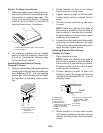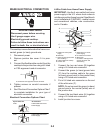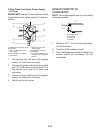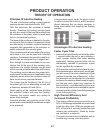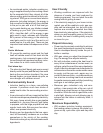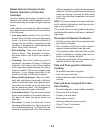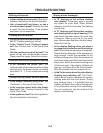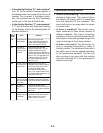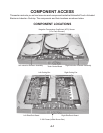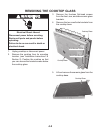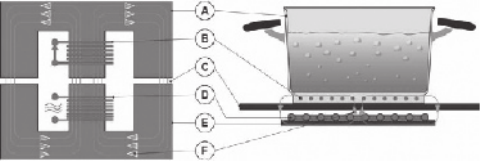
3-1
PRODUCT OPERATION
THEORY OF OPERATION
Advantages Of Induction Heating
Faster Cycle Time
Heat is developed directly and instantly within
1 second inside the pot or pan, allowing a
much quicker startup than other heating
equipment. Heating process times can be
dramatically reduced & production output
can be significantly increased.
With induction cooking the heat level is every
bit as instantaneous, and as exact, as with gas,
yet with none of the many drawbacks of gas
(carbon monoxide, loss of flame etc.). Induc
-
tion elements can be adjusted to increments
as fine as the cooking utensil cares to supply,
just like gas, and—again very important to
serious cooks—such elements can run at as
low a cooking-heat level as wanted for gentle
simmering and suchlike (something even gas
is not always good at).
High Thermal Efficiency And
Increased Profitability
This energy-efficient process converts up to
90% of the energy expended into useful heat
to reduce utility costs. (With gas ranges up to
60% of the heat is normally wasted through
indirect gas combustion.) Stand-by losses
are reduced to a minimum.
The costs of exhaust duct installation and air
conditioning running costs are saved.
•
•
•
•
Principles Of Induction Heating
The use of induction heating in glass-ceramic
cooking devices has existed since 1987.
With this technique, the container is heated
directly. Therefore the cooking surface heats
up only as a result of the heat transmitted from
the container to the glass, which is much lower
than in conventional systems.
The base of the container is heated by the elec
-
tric currents that circulate in its base and which
are induced by a variable, medium-frequency
magnetic field generated by the inductors lo-
cated underneath the ceramic glass.
Only containers with a base made of ferromag
-
netic steel or iron can be used with induction
cooktops. Containers that cannot be used for in
-
duction can be recognized by a magnet test.
Even though it is recommendable to use con
-
tainers that fit the size of the cooking zone,
containers of a smaller diameter can be used
without causing notable reductions of efficiency.
The cooktop control reduces the power deliv
-
ered to small containers and, if applicable, stops
supplying power when the container does not
have the minimum required diameter.
The power inverter transforms the 50 Hz of
the power grid into an alternating current with
a frequency between 20 and 60 Hz.
Direct heating of the container base provides
the induction system with very fast heating.
Likewise, the system reacts very quickly to
power level changes.
Induction provides very precise control of the
power levels, wherefore it allows delicate recipes
to be prepared.
A temperature sensor under the glass is used
in order to protect the inductor, and it moreover
allows detecting that an empty container is
being over-heated and stopping the heating
process.



